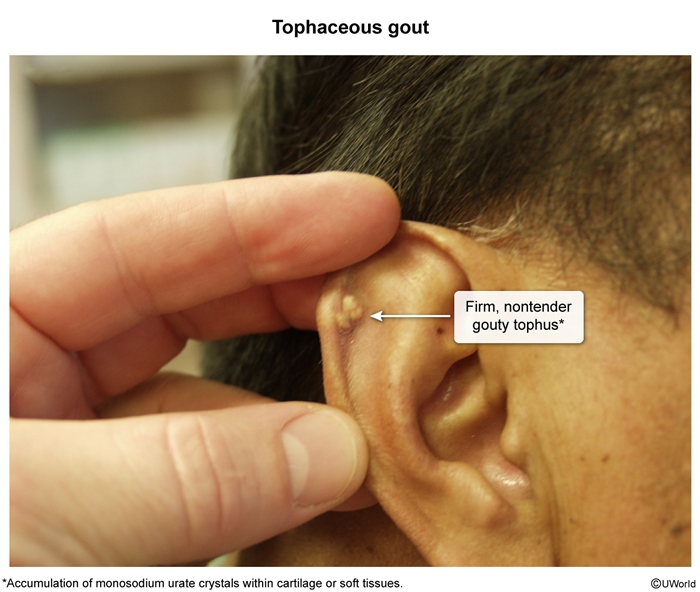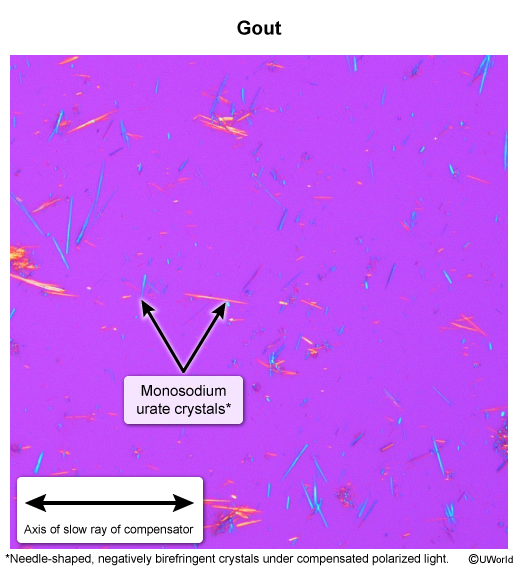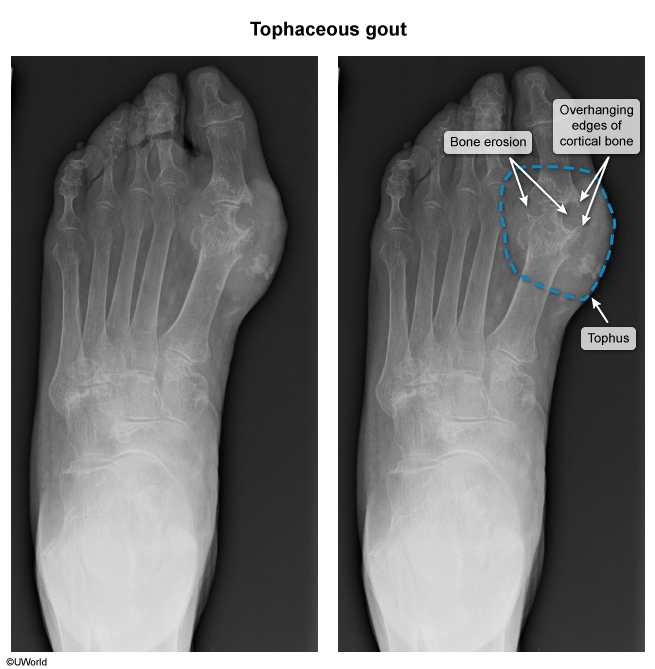Crystal Arthropathies: Gout And Pseudogout
Article Sections
Introduction
Gout and calcium pyrophosphate dihydrate (CPPD) arthritis (pseudogout) are crystal arthropathies characterized by acute inflammation in response to crystal deposition within joints. Gout is due to monosodium urate (MSU) crystal deposition, whereas CPPD arthritis results from CPPD crystal accumulation. Both disorders typically present with acute, often dramatic, monoarthritis but also can progress to chronic arthropathy.
Gout
Gout is caused by conditions that are associated with increased uric acid production or decreased uric acid clearance (Figure 1). When uric acid levels exceed physiologic solubility (eg, >7 mg/dL), MSU crystals can precipitate in joints and soft tissues, particularly in cooler regions of the body (eg, feet), leading to a cascade of inflammatory processes within the affected tissues.
Normally, MSU crystals have an immunoprotective coating of apolipoprotein E or B. When uric acid levels fluctuate rapidly (eg, due to binge intake of alcohol) or joint microtrauma occurs, bare MSU crystals can become exposed to IgG antibodies. Antibody binding leads to neutrophil phagocytosis and release of inflammatory cytokines (primarily IL-1), resulting in infiltration by neutrophils and macrophages and subsequent inflammatory changes. The inflammatory response is largely mediated by activation of the NLRP3 inflammasome and subsequent release of interleukin-1β (IL-1β).
Continue Learning with UWorld
Get the full Crystal Arthropathies: Gout And Pseudogout article plus rich visuals, real-world cases, and in-depth insights from medical experts, all available through the UWorld Medical Library.
Figures

Images


